Discover 20 hidden attractions, cool sights, and unusual things to do in Hiroshima (Japan). Don't miss out on these must-see attractions: Atomic Bomb Dome, Hiroshima Peace Memorial Park, and Hiroshima Castle. Also, be sure to include Hiroshima Peace Memorial Museum in your itinerary.
Below, you can find the list of the most amazing places you should visit in Hiroshima (Hiroshima).
Table of Contents
Atomic Bomb Dome

Also known as: 原爆ドーム
Historic remains of the atomic blast. The Hiroshima Peace Memorial, originally the Hiroshima Prefectural Industrial Promotion Hall, and now commonly called the Genbaku Dome, Atomic Bomb Dome or A-Bomb Dome, is part of the Hiroshima Peace Memorial Park in Hiroshima, Japan and was designated a UNESCO World Heritage Site in 1996. The ruin of the hall serves as a memorial to the over 140,000 people who were killed in the atomic bombing of Hiroshima at the end of World War II. It is permanently kept in a state of arrested ruin as a reminder of the destructive effects of nuclear warfare.[1]
Address: 1-chōme-1-10 Ōtemachi, Naka-ku, Hiroshima, 730-0051 Hiroshima
Hiroshima Peace Memorial Park
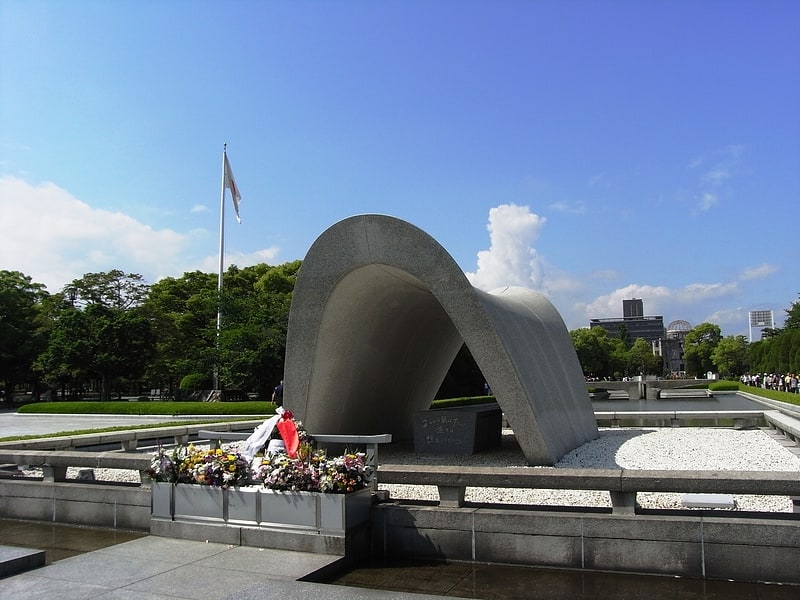
Also known as: 広島平和記念公園
Park commemorating atomic bomb victims. Hiroshima Peace Memorial Park is a memorial park in the center of Hiroshima, Japan. It is dedicated to the legacy of Hiroshima as the first city in the world to suffer a nuclear attack at the end of World War II, and to the memories of the bomb's direct and indirect victims. The Hiroshima Peace Memorial Park is visited by more than one million people each year. The park is there in memory of the victims of the nuclear attack on August 6, 1945, in which the United States dropped an atomic bomb on the Japanese city of Hiroshima. The Hiroshima Peace Memorial Park was planned and designed by the Japanese Architect Kenzō Tange at Tange Lab.
The location of Hiroshima Peace Memorial Park was once the city’s busiest downtown commercial and residential district. The park was built on an open field that was created by the explosion. Today there are a number of memorials and monuments, museums, and lecture halls, which draw over a million visitors annually. The annual 6 August Peace Memorial Ceremony, which is sponsored by the city of Hiroshima, is also held in the park. The purpose of the Peace Memorial Park is not only to memorialize the victims of the bombing, but also to perpetuate the memory of nuclear horrors and advocate world peace.[2]
Address: Naka-ku, Nakajimachō, 1, 〒730-0811 Hiroshima
Hiroshima Castle
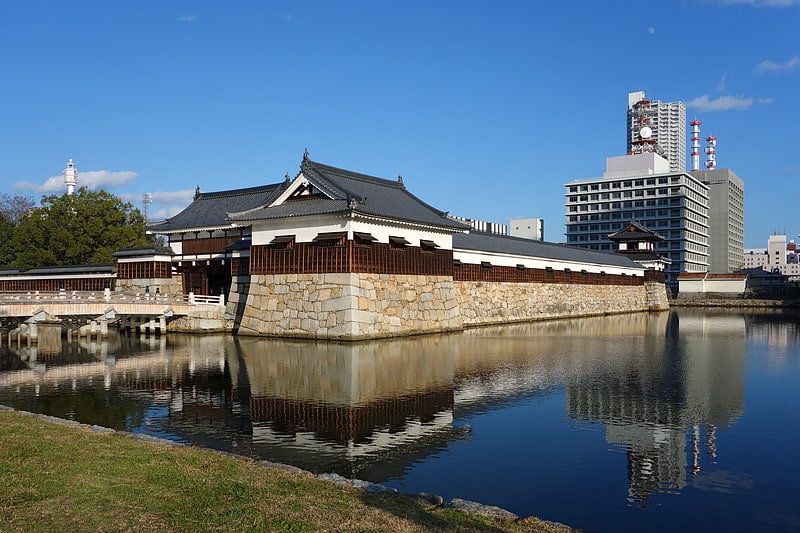
Also known as: 広島城
Castle with a history museum and views. Hiroshima Castle, sometimes called Carp Castle, is a castle in Hiroshima, Japan that was the home of the daimyō of the Hiroshima han. The castle was originally constructed in the 1590s, but was destroyed by the atomic bombing on August 6, 1945. The castle was rebuilt in 1958, a replica of the original that now serves as a museum of Hiroshima's history before World War II.[3]
Address: 21-1 Motomachi, Naka-ku, Hiroshima, 730-0011 Hiroshima
Hiroshima Peace Memorial Museum

Also known as: 広島平和記念資料館
Exhibits on the WWII atomic-bomb attack. The Hiroshima Peace Memorial Museum is a museum located in Hiroshima Peace Memorial Park, in central Hiroshima, Japan, dedicated to documenting the atomic bombing of Hiroshima in World War II.
The museum was established in August 1955 with the Hiroshima Peace Memorial Hall (now the International Conference Center Hiroshima). It is the most popular of Hiroshima's destinations for school field-trips from all over Japan and for international visitors. 53 million people had visited the museum from its opening in 1955 through 2005, averaging over one million visitors per year. The architect of the main building was Kenzō Tange.[4]
Address: 1-2 Nakajimacho, Naka-ku, 730-0811 Hiroshima
Children's Peace Monument
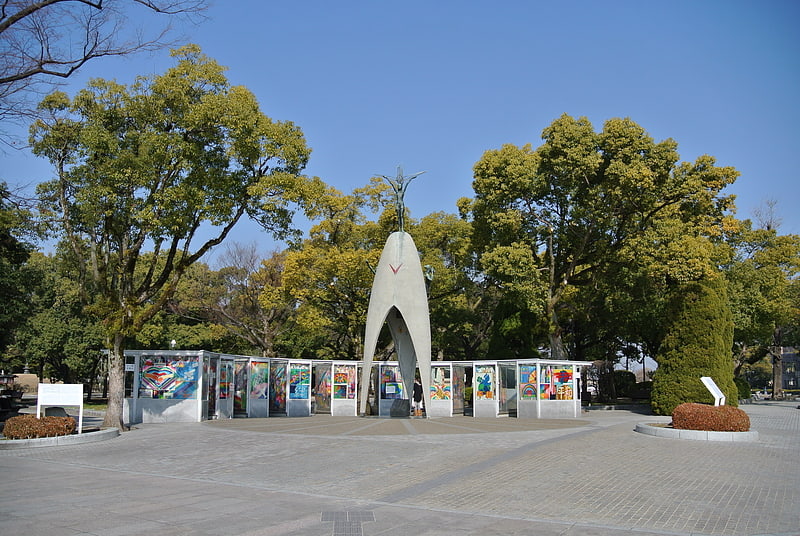
Also known as: 原爆の子の像
Memorial to child victims of the bomb. The Children's Peace Monument is a monument for peace to commemorate Sadako Sasaki and the thousands of child victims of the atomic bombing of Hiroshima. This monument is located in Hiroshima, Japan. Sadako Sasaki, a young girl, died of leukemia from radiation of the atomic bomb dropped on Hiroshima on 6 August 1945.[5]
Shukkei-en
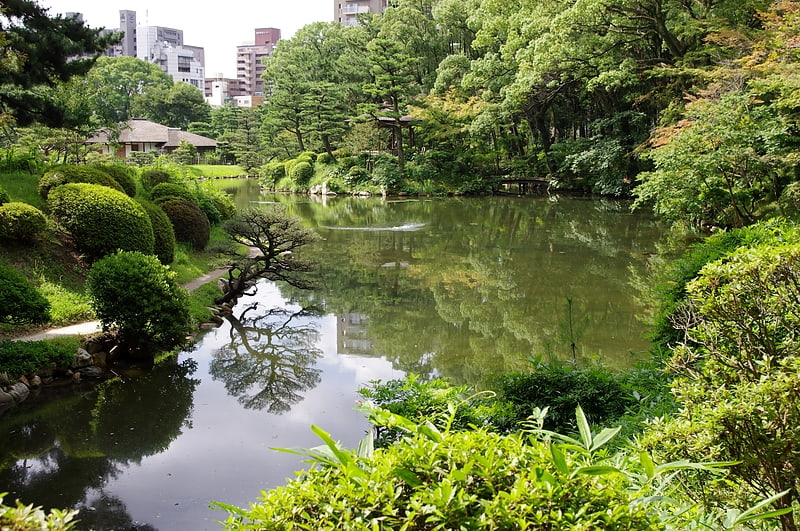
Also known as: 縮景園
Historic garden with a pond and a tea shop. Shukkei-en is a historic Japanese garden in the city of Hiroshima, Japan. The Hiroshima Prefectural Art Museum is located adjacent to the garden.[6]
Address: 2-11 Kaminobori-cho, Hiroshima
Hiroshima Museum of Art
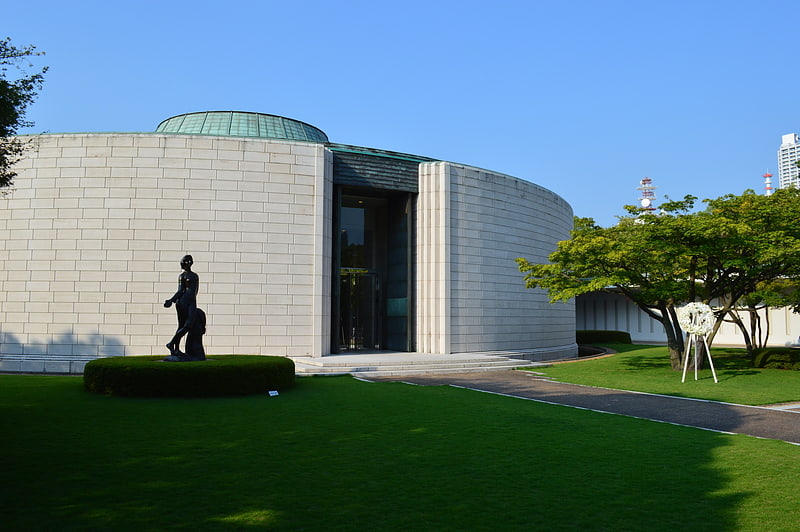
Also known as: ひろしま美術館
Venue for European and Japanese art. The Hiroshima Museum of Art is an art museum founded in 1978. It is located in the Hiroshima Central Park in Hiroshima, Japan.[7]
Address: 3-2 Motomachi, 730-0011 Naka
Hiroshima City Asa Zoological Park
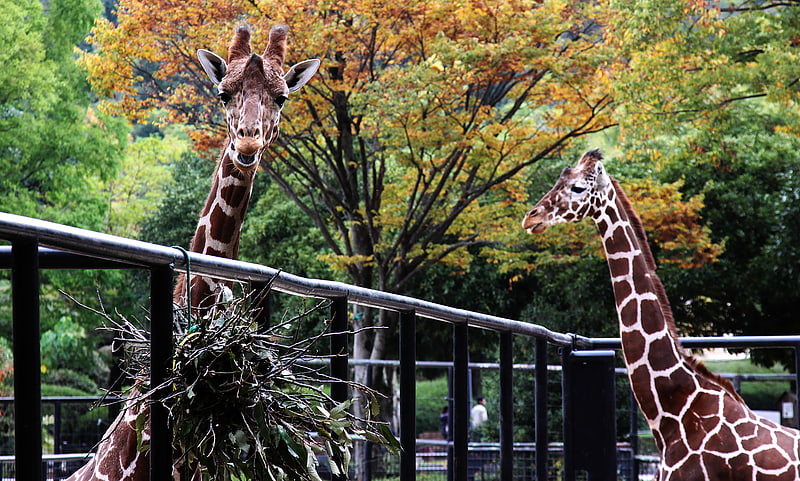
Also known as: 広島市安佐動物公園
Zoo with lions, reptiles and exotic birds. Hiroshima City Asa Zoological Park is a zoo in Hiroshima, Japan.[8]
Address: Asacho Dobutsuen, Asakita-ku, 731-3355 Hiroshima
Hiroshima Prefectural Art Museum
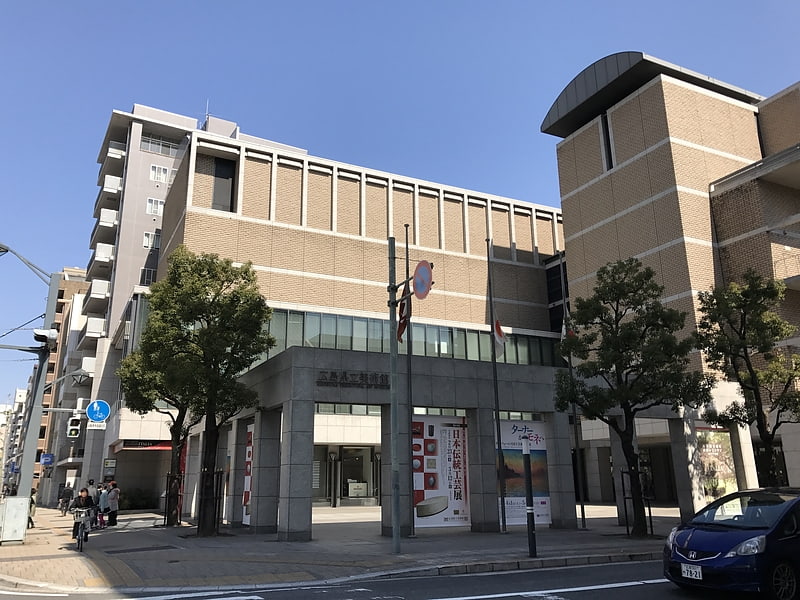
Also known as: 広島県立美術館
Museum in Hiroshima, Japan. The Hiroshima Prefectural Art Museum is an art museum founded in 1968. It was reconstructed in 1996. It is located near Shukkei-en in Hiroshima, Japan.[9]
Address: 2-22 Kaminobori-cho, 730-0014 Naka
Hiroshima City Museum of Contemporary Art
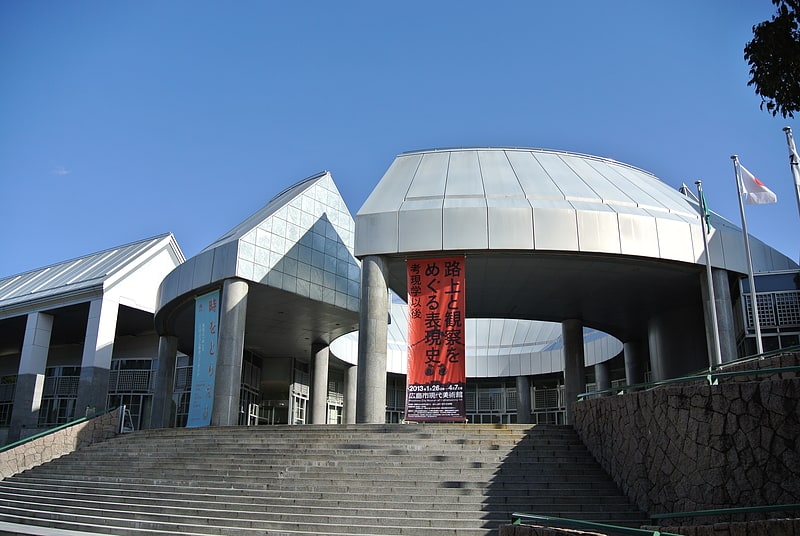
Also known as: 広島市現代美術館
Hilltop art museum and sculpture garden. The Hiroshima City Museum of Contemporary Art is an art museum founded in 1989. It is in Hijiyama Park in Hiroshima, Japan. The building was designed by architect Kisho Kurokawa.[10]
Address: 1-1 Hijiyamakōen, Minami-ku, Hiroshima-shi, 732-0815 Hiroshima
Aioi Bridge

Also known as: 相生橋
T-shaped bridge targeted by 1945 bomb. The Aioi Bridge is an unusual "T"-shaped three-way bridge in Hiroshima, Japan. The original bridge, constructed in 1932, was the aiming point for the 1945 Hiroshima atom bomb because its shape was easily recognized from the air and also because the bridge was close to the center of the city. Although the bridge was not destroyed by the atomic blast, it did sustain heavy damage. After the war, the bridge was repaired and remained in service for nearly four decades, before it was replaced by a new bridge in 1983. A surviving portion of a floor girder from the original bridge was subsequently donated to the Hiroshima Peace Memorial Museum.
The longest part of the bridge crosses the Ōta River just to the north of the island containing the district of Nakajima-cho. The downstroke of the "T" links the main bridge to the island, and is also the north entrance to the Hiroshima Peace Memorial Park.[11]
Mazda Stadium
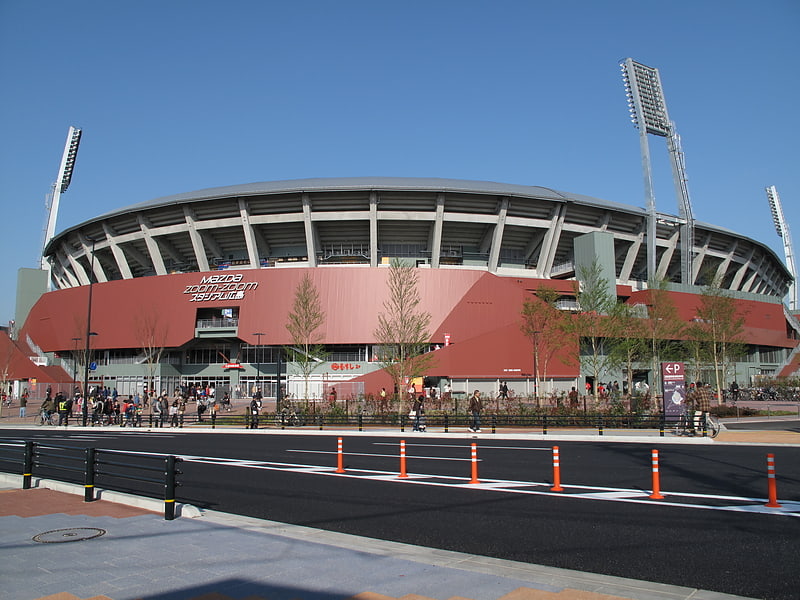
Also known as: Mazda スタジアム広島
Stadium in Hiroshima, Japan. Mazda Stadium Hiroshima, also called Hiroshima Municipal Stadium, is a baseball stadium in Minami-ku, Hiroshima, Japan. It is used primarily for baseball and is the home of the Hiroshima Toyo Carp of the Japanese Central League. The ballpark has a capacity of 32,000 people and opened on April 10, 2009. It replaced First Hiroshima Municipal Stadium and initially retained the old ballpark's official name. The stadium architecture is considered to be labeled as a retro-classic ballpark.[12]
Address: 2-3-1 Minamikaniya, Minami-ku, 732-0803 Hiroshima
Mitaki-dera
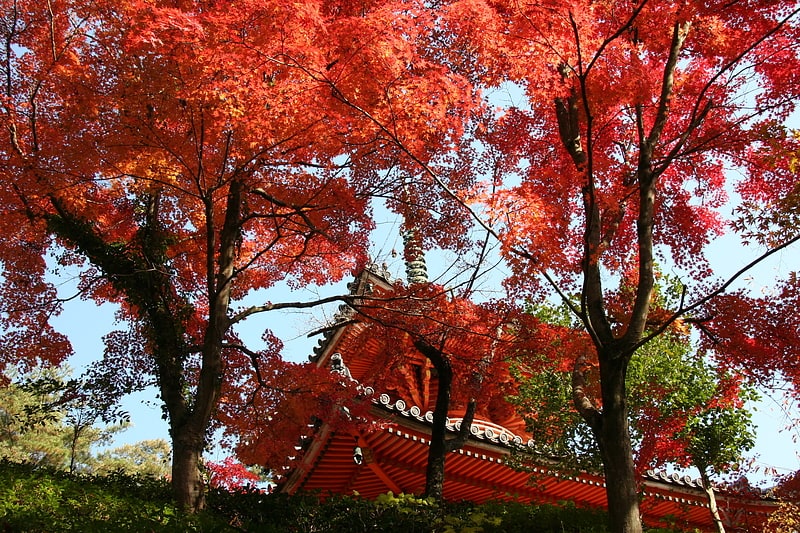
Also known as: 三瀧寺
Buddhist temple in Hiroshima, Japan. Mitaki-dera is a historic Japanese temple in the city of Hiroshima, Japan.[13]
Address: 411 Mitakiyama, Nishi-ku, 733-0805 Hiroshima
Hiroshima Big Arch

Also known as: 広島広域公園陸上競技場
Athletic track in Hiroshima, Japan. The Hiroshima Big Arch, known under current sponsorship as EDION Stadium Hiroshima, is a multi-purpose stadium in Hiroshima, Japan. It used mostly for association football matches and also for athletics. The venue is the home of J. League club Sanfrecce Hiroshima. It has a capacity of 36,894. It is an all-seater. It was formerly known as Hiroshima Park Stadium.[14]
Address: Oaza Ozuka, Numata-cho, Hiroshima
Hiroshima Gokoku Shrine
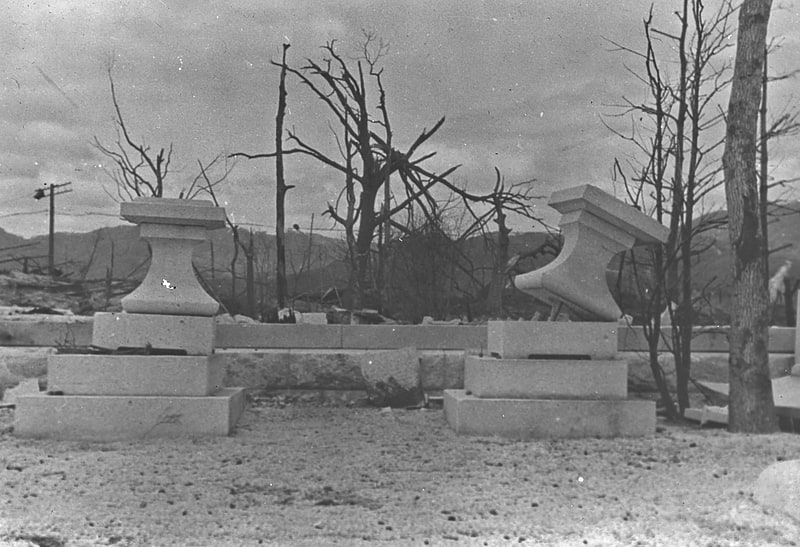
Also known as: 広島護国神社
Shinto shrine for New Year celebrations. Hiroshima Gokoku Jinja is a Japanese Shinto Shrine in Hiroshima, Japan.[15]
Address: 21-2 Motomachi Naka-ku, 730-0011 Hiroshima
Honkawa Elementary School Peace Museum
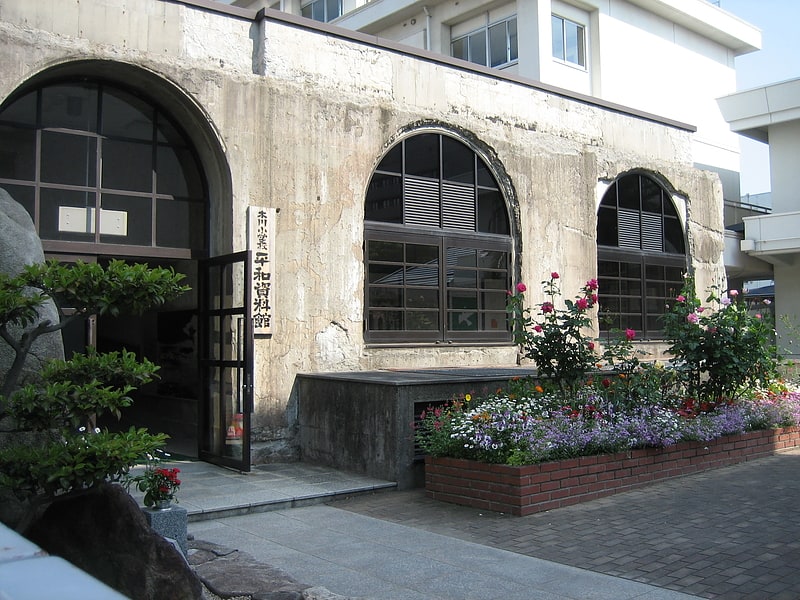
Museum in Hiroshima, Japan. The Honkawa Elementary School Peace Museum is a museum of the Peace in Honkawacho, Naka-ku, Hiroshima, Japan.
The school was the closest school to ground zero of the Hiroshima bombing. They lost about 400 students and more than 10 teachers, and the building took great amounts of damage from the atomic bomb dropped on August 6, 1945.
The Peace Museum is the part of the school building with the basement of the former Hiroshima City Honkawa Elementary School; it is kept as a place to learn about the importance of peace. The museum is operated by the Honkawa Elementary School PTA, as well as former members of the PTA, and is cleaned and maintained by the students.
The memorial service for the students and teachers killed in the blast is held every August 5 at the school. The school has also appeared in the manga Barefoot Gen, written by Keiji Nakazawa.[16]
Address: 1-5-39 Honkawacho, Naka-ku, 730-0802 Hiroshima
Hiroshima Children's Museum
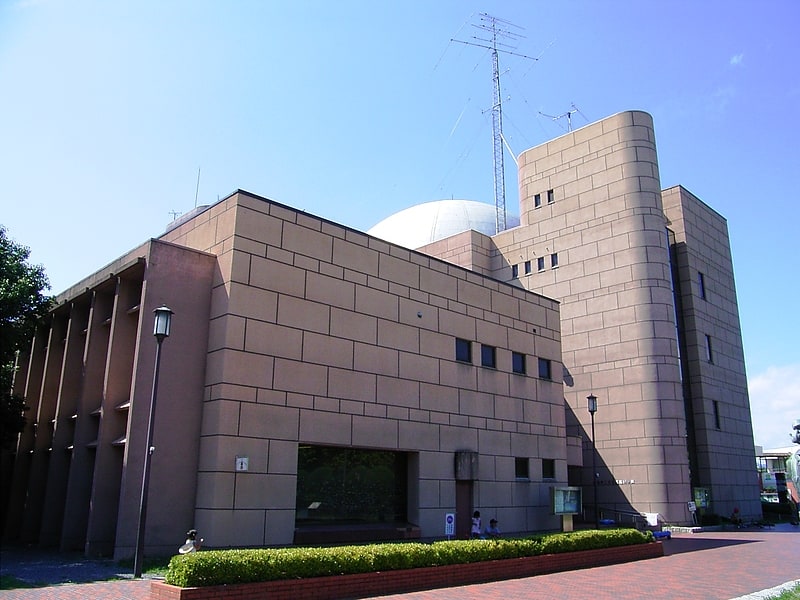
Also known as: 広島市こども文化科学館
Museum in Hiroshima, Japan. The Hiroshima Children's Museum is a science museum for children in Hiroshima, Japan.[17]
Address: 5-83 Moto machi, Naka ku, 730-0011 Naka
Assumption of Mary Cathedral
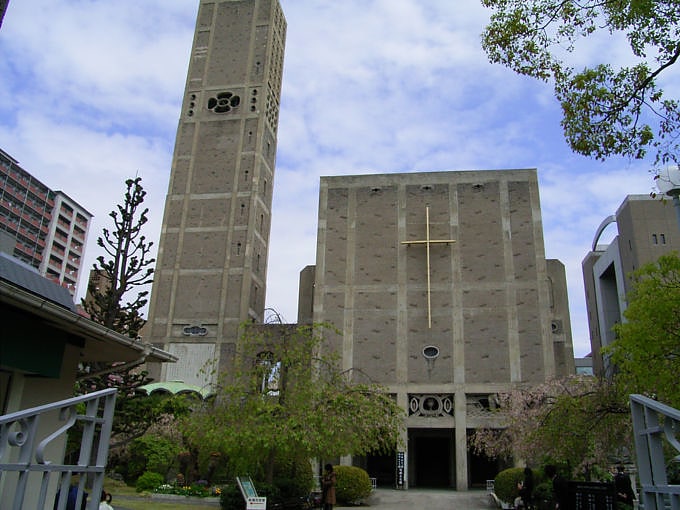
Also known as: 世界平和記念聖堂
Cathedral in Hiroshima, Japan. The Assumption of Mary Cathedral also called Memorial Cathedral of World Peace is a religious building affiliated with the Catholic Church located in Hiroshima, Japan.
The church was designed by Togo Murano. It follows the Roman or Latin rite and serves as the principal church of the Diocese of Hiroshima (Dioecesis Hiroshimaensis カトリック広島教区) which was created in 1959 with the bull Qui arcano of Pope John XXIII.
Pope John Paul II visited the church on his tour of Japan in February 1981. It was built in tribute to the victims of war and the nuclear bomb that was dropped on the city. Father Enomiya Lassalle, who was exposed to the atomic bomb in Hiroshima, began construction in 1950 and opened in 1954.[18]
Address: 4-42 Noboricho, Naka-ku, 730-0016 Hiroshima
Fukuromachi Elementary School Peace Museum

Also known as: 広島市立袋町小学校
Museum in Hiroshima, Japan. The Fukuromachi Elementary School Peace Museum is a peace museum in Fukuromachi, Naka-ku, Hiroshima, Japan. The school was one of the closest schools to ground zero when the atomic bomb fell on August 6, 1945. They lost about 160 students and teachers and the building was heavily damaged. After a few days, the school became a first aid station, and its black burned wall became a message board to find missing people. The Peace Museum is the section of the school building with the basement of the former Municipal Fukuromachi Elementary School in Hiroshima. The school is keeping it as a relic of the atomic explosion, to foster peace, and to send their information to the world.[19]
Address: 6-36 Fukuromachi Naka-ku, 730-0036 Hiroshima
Hiroshima National Peace Memorial Hall for the Atomic Bomb Victims
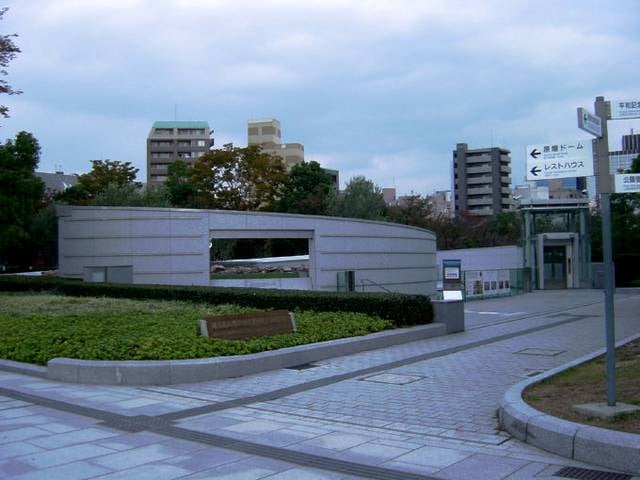
Also known as: 国立広島原爆死没者追悼平和祈念館
Solemn memorial to atomic bomb victims. Hiroshima National Peace Memorial Hall for the Atomic Bomb Victims is one of the National Memorial Halls in Hiroshima, Japan.[20]
Address: 1-6 Nakajimacho, Naka-ku, 730-0811 Hiroshima